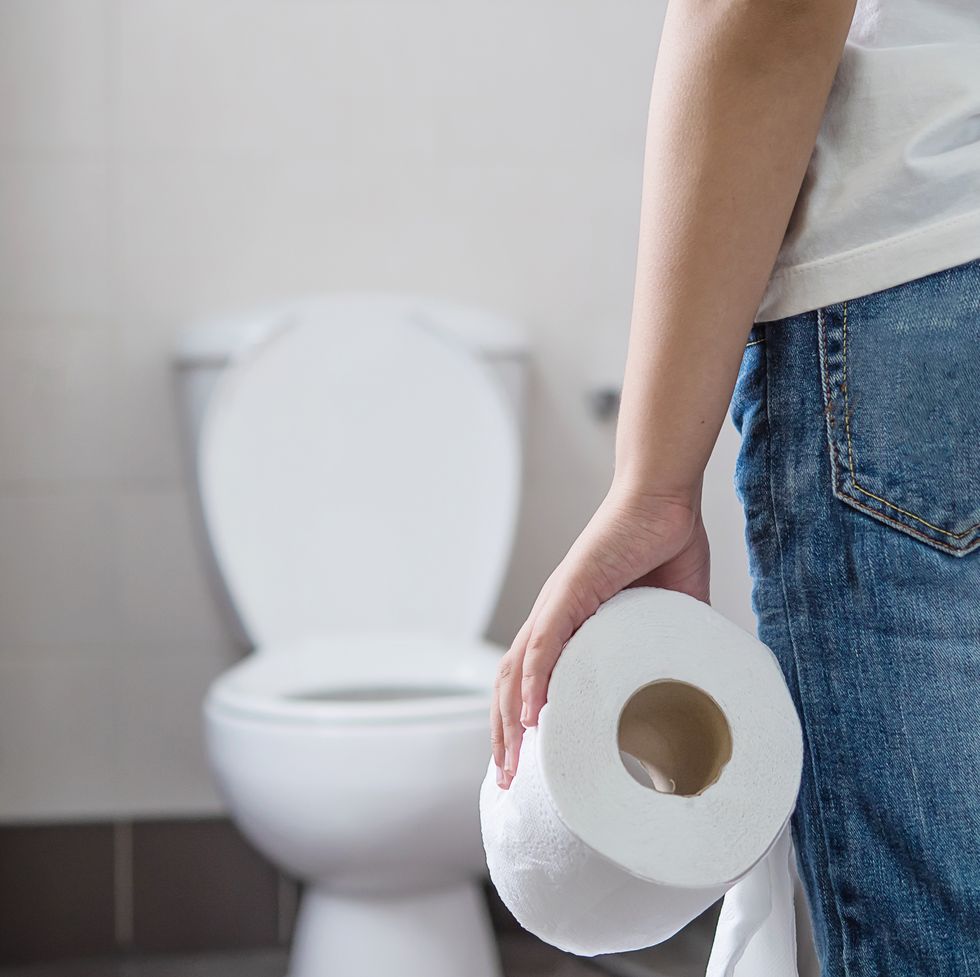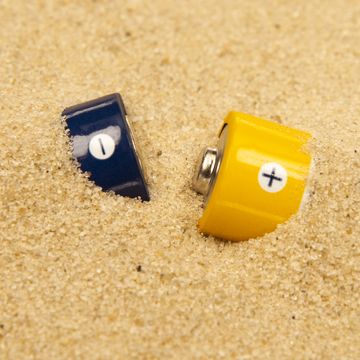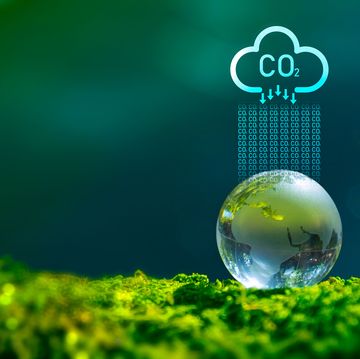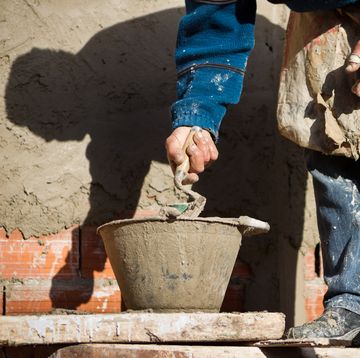- The spread of the novel coronavirus has spurred panicked shoppers to hoard, of all things, toilet paper.
- If you've run out of toilet paper and you can't get to the store, we have some ideas.
- Flushing anything else down your toilet can seriously impact your plumbing system and wastewater treatment facilities down the line.
The global spread of the novel coronavirus has upended daily life for millions of people around the world. In many communities, the COVID-19 pandemic has spurred consumer panic buying; the bread and milk aisles at supermarkets, for example, are barren because people are understandably concerned about the health impacts of the virus.
But the hottest commodity in this strange new world (outside of hand sanitizer) may be toilet paper. We've seen a slew of viral videos showing shoppers hoarding packs of TP and getting into fist fights over the coveted remaining rolls. On Amazon, price gouging has run rampant, with some packs of toilet paper selling for as much as $60.
It's important to note this kind of panic accumulation does not make sense—and President Trump has urged Americans to stop doing it. Not only does the average person use just 100 rolls of toilet paper per entire year, but almost all our toilet paper is still made domestically without any risk to the supply chain from travel bans.
Still, if other people's hoarding has left you in a sudden toilet paper pinch, what else can you use when you need to wipe? Glad you asked. Here's a comprehensive guide to treating your butt—and your plumbing—right.
I'm Out of Toilet Paper. What Now?
If you can't make it to the grocery store or pay a premium for TP online, the following materials work just fine for cleaning your butt—as long as you don't flush them down the toilet. (More on that in a minute.)
🚽 Wipes, paper towels, napkins, tissues, and toilet seat covers.
🚽 Rags and hand towels. Just make sure you wash them in hot water.
You should also consider buying a bidet, which is both environmentally and economically friendly. A bidet uses one eighth of a gallon of water each flush, according to Business Insider. (It takes about 37 gallons to produce a single roll of toilet paper.) Attaching a bidet to your toilet can cut the amount you spend on toilet paper by as much as 75 percent.
While we haven't personally tested any products (yet), you can easily attach the hardware to your toilet. You can find quality bidets at places like Home Depot and Lowe's and on Amazon, where some go for as little as $30.
So What Can I Actually Flush?
Here's the Golden Rule of Flushing: "If you wouldn't put it down your garbage disposal, don't flush it," Jim Ervin, who worked as a compliance manager at the San Jose-Santa Clara Regional Wastewater Treatment Facility for 27 years, tells Popular Mechanics.
Multiple experts agree the only things you should actually flush down your toilet are pee, poop, vomit, and toilet paper.
But what about paper towels or napkins?
No. Even though they're a close substitute for toilet paper, experts don't recommend flushing them.
How about rags or hand towels?
Sorry, no.
Socks or sponges?
Nope.
Well, why not?
Because flushing all of these items "can clog the sewer lines going from [your] home or apartment and cause [the] sewer to back up into [your] home through sinks, showers, toilets, dishwashers, and washing machines," Jennie Loft, a public information officer for the San Jose-Santa Clara Wastewater Treatment Facility, tells Popular Mechanics via email.
Okay. Not that I'd ever wipe my butt with cooking oil or grease ... but can I still flush it?
No way. Instead, let it cool and toss it in a trash can. "Anything that congeals at more or less room temperature, it's going to do the same thing if you flush it down the toilet," says Ervin.
Can I flush my medications down the toilet?
In almost all cases, no. According to the U.S. Food and Drug Administration (FDA), some medication is safe to flush—if there isn't a readily available disposal alternative. But for anything not on the list in that link, the FDA recommends mixing the medication with coffee grounds, soil, or kitty litter and tossing it in a sealed plastic bag.
Hey, that reminds me! I need somewhere to dispose of my kitty litter. Can I flush that?
Nice try, but no. Especially if you have a newer, low-flow (or low-flush) toilet, which consumes no more than 1.6 gallons (6 liters) per flush, compared to the 3.5 to 7 gallons that older toilets use. The litter could get stuck in your pipes, expand, and lead to an explosive situation, according to the Washington Post.
Tampons? Condoms?
Don't do it. Maintenance workers have to pull every condom and tampon out of the system. At wastewater treatments, catcher's screens, which filter out the larger items that slide through our pipes, are covered in condoms and tampons. Someone has to pull them out by hand, says Ervin.
Dental floss?
Negative. "It's a fiber, and ultimately, if you get thousands and thousands of them, they start wrapping themselves around pumps and things," Ervin says.
What about hair?
Bad idea. It, too, can get tangled down the line.
At least I'm safe flushing flushable wipes ... right?
You'd think so. But contrary to what their packaging says, flushable wipes are not, in fact, flushable. They’re often made with rayon, viscose, or other plastics, which aren't biodegradable. (Fun fact: The flushable wipe industry is worth more than 300 million dollars, according to the New York Times.)
Remember: Wipes clog pipes. But it doesn't stop there.
"Clogs can happen further downstream in the system as well that can cause sanitary sewer overflows with untreated sewage spilling into the street or into local waterways," Loft says. Plus, these non-flushable items can clump together and form massive "fatbergs," which disrupt flow downstream and damage infrastructure.
Sorry, fat-what?
Fatbergs. They're congealed masses of fat, oil, and grease and non-flushable items like—you guessed it—flushable wipes that get lodged in pipes and clog up sewer systems. They’re destructive to vital infrastructure and incredibly expensive to clean out.
The city of San Jose, for example, sends maintenance crews to sewer pump stations in the area several times a week to "pull rags," says Colin Heyne, one of San Jose's public information officers.
A four-person crew will spend at least four hours a week working to dislodge the fatberg. "That equates to 16 person-hours per week, or 832 hours per year just on this one sewer collection system maintenance activity," Heyne tells Popular Mechanics. "That's equivalent to one person spending 42 percent of their annual hours worked on this activity."
The costs certainly add up. The San Francisco Public Utilities Commission spends about 4 million dollars per year to flush fatbergs from its pipes, according to a spokesperson featured in the above video by Adam Ruins Everything. Detroit removed a 6-foot-tall fatberg from its pipes in 2018. Three years earlier, London dislodged a fatberg the size of a city bus from its pipes.
City workers and maintenance crews are under enough strain as it is. Let's not make their jobs any tougher by flushing things we shouldn't.
Jennifer Leman is a science journalist and senior features editor at Popular Mechanics, Runner's World, and Bicycling. A graduate of the Science Communication Program at UC Santa Cruz, her work has appeared in The Atlantic, Scientific American, Science News and Nature. Her favorite stories illuminate Earth's many wonders and hazards.














